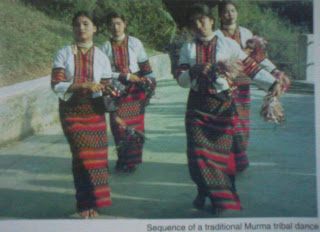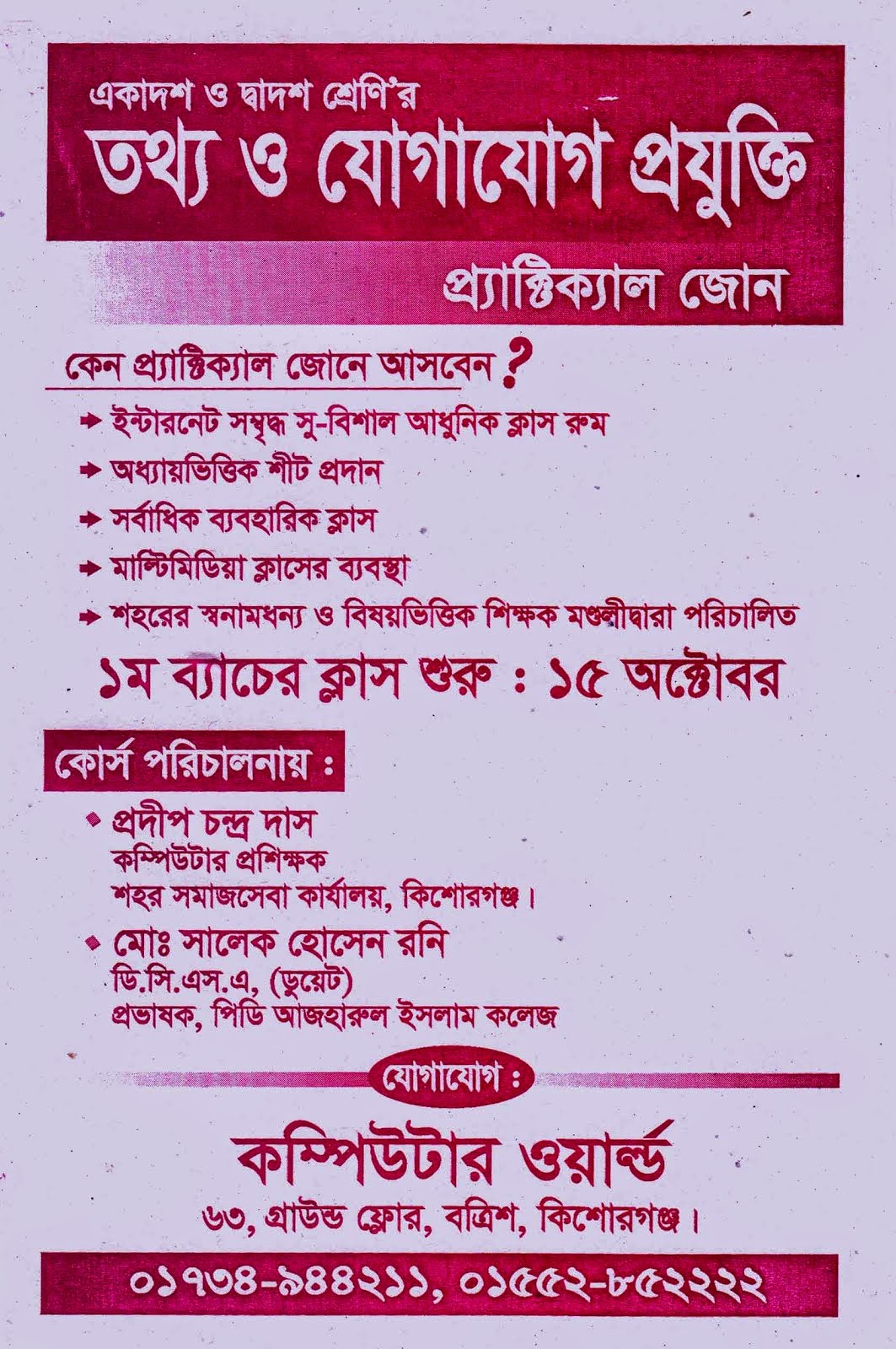skip to main |
skip to sidebar

co

In Bangladeshi dance the sub continental classical forms occupy a dominating position. Folk- forms and themes along with tribal, folk and social dances are widely practiced. Sautala and Monipuri tribal dances are best known and popular in the country. In popularizing and establishing different forms of dance, dramas, various institutions and academies are playing laudable role.
In 1956, the first full length feature film was
produced in Bangladesh.
Before that country was dependent on imported films. Now Bangladesh has reached the stage
where the film industry produces around 80 feature films in a year. Lately
there has been a growth in documentaries and art films.
Bangladesh Bangladesh

Kishoreganj24
Lets go with Us
Social Icons
computerworl

co
Popular Posts
-
Leaving the bus schedules from various destination Kishoreganj. Bottrish Bus Stand Bottrish, Kishoreganj. Buses name:...
-
There are non-governmental organizations, including the name and address of the organization.You can contact the following address for a...
-
In Bangladeshi dance the sub continental classical forms occupy a dominating position. Folk- forms and themes along with tribal, folk and ...
-
Dear visitor here we give some institutes list with address for you. We hope it will help you. College Name: Gurudoyal Governme...
-
Modern paintings in Bangladesh were pioneered by artist like Shilpacharya Zainul Abedin, Quamrul Hasan, Shafiuddin Ahmed, S.M. Sultan, Nov...
-
Kishoreganj Railway Staion Tarapasha, Kishoreganj. KIshoreganj to Dhaka Inter-city Train Agaorosindhur Provat...
-
Dear visitor there is many newspapers in Kishoreganj district . Here we give a list of some important Newspapers. ...
-
Kishoreganj town has several Ancient market . The goal is for consumers to purchase things necessary to be crowded . The...
-
The style and pattern of country’s architecture has undergone changes at different stages of history due to influence of foreign pat...
125x125 Ads1

Powered by Blogger.
Dance, Drama, Music and Cinema
In Bangladeshi dance the sub continental classical forms occupy a dominating position. Folk- forms and themes along with tribal, folk and social dances are widely practiced. Sautala and Monipuri tribal dances are best known and popular in the country. In popularizing and establishing different forms of dance, dramas, various institutions and academies are playing laudable role.
The three district categories
of Music in Bangladesh
are classical, folk and modern. Classical music-both vocal and instrumental is
an integral part of the tradition and culture of the people of the region. This
art developed mostly during the Turkish rule in this Sub-Himalayan region. Folk
music is suffused with mysticism and folk-lore and through ages was nurtured and
development by the village poets and folk singers. In modern Bengali songs and
music foreign traits have been blended with the traditional forms. The beauty
of the Bangla songs has been accentuated by rich lyrics to which the famous
poets have contributed profusely. The western music has had deep impact on
contemporary music and orchestration. There are two kinds of theatre in Bangladesh. One
is modern theatre and the other is Jatra or Folk theatre. Jatra is a form of
open air rural opera which depicts mythological episodes, love-lore and acts of
heroism and historical events and characters. This form of places is an old
tradition and part of Bangladeshi heritage and hugely popular in rural areas.
Modern plays took root mostly during the Britiish period. The modern theatre
got a momentum after the independence of the country. In both forms of theatre
there are over two hundred amateur groups all over Bangladesh who are involved in
regular stage performances. Winter is the Jatra season but modern theatre
groups are involved in regular stage performance.
This Post is collected from Bangladesh
Department of films and publications
Architecture of Bangladesh
The style and pattern of
country’s architecture has undergone changes at different stages of history due
to influence of foreign patterns. The influence of Muslim Architecture on
pre-Muslim indigenous style is vivid. The climate and attitude of ruling upper
class also characterized the development of patterns and architectural designs
in Bangladesh.
In the Mughal era the predominant architectural patterns and designs were the
central domes, arches and tall central entrances. The churches introduced the
European style. Fusion of Mughal and European styles took root at the turn of
the last century. The modern architecture which is common today started in the
1960s
We still have some Mosques
like Chhota sona and Kusumba Mosques which were made in the pre Mughal period
having terracotta art. In the Mughal era strong horizontal parapet was
introduced. A lot of changes which were the typical Mughal style came with this
particular age.
A view of the historic Curzon
Hall Named after British viceory
of the Subcontinent Lord Curzon Representing Victorian
architectural From which now houses the science Faculty of Dhaka University.
Putia Rajbari, Rajshahi.
National museum
Bangladesh China friendship conference centre sherebangla nagar, Dhaka
This Post is collected from Bangladesh
Department of films and publications
Flora
Seasonal fruits and flowers which are abundantly available in the country.
This Post is collected from Bangladesh
Department of films and publications
Subscribe to:
Posts (Atom)

Copyright © 2013 Kishoreganj24 |
All Rights Reserved |















.jpg)







